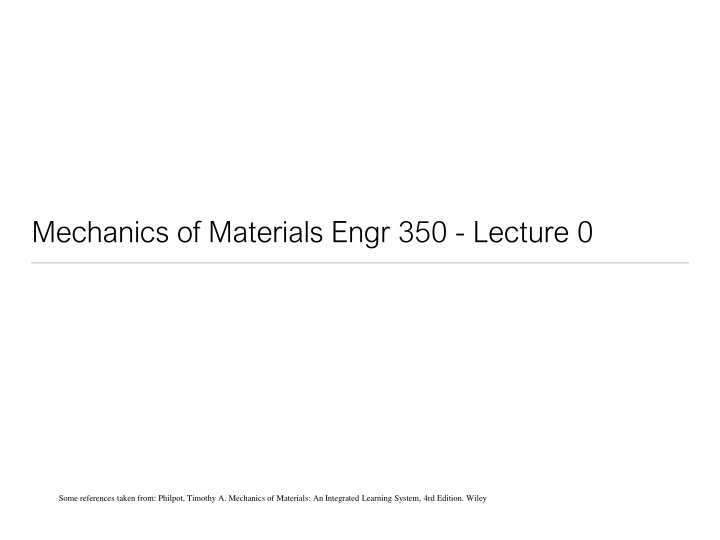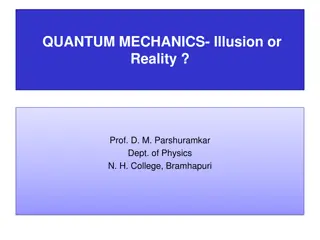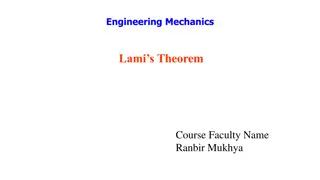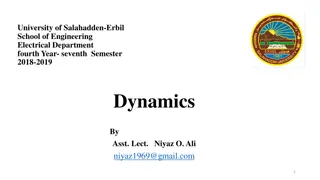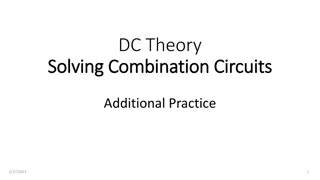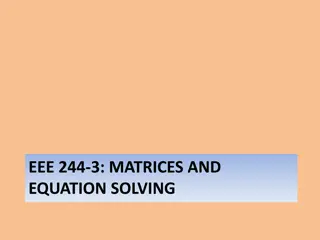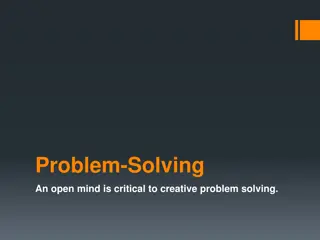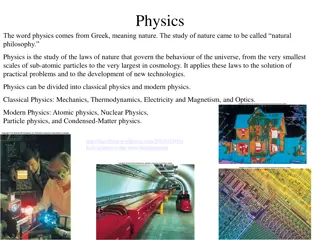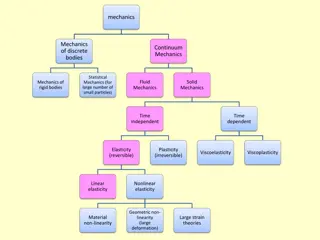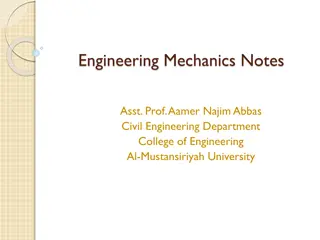Engineering Mechanics Overview and Problem-Solving Techniques
Explore the fundamental concepts of Engineering Mechanics with references from "Mechanics of Materials: An Integrated Learning System" by Timothy A. Philpot. Learn about approved calculators, problem-solving documentation, free body diagrams (FBDs), and centroids. Enhance your understanding of coordinate systems, forces, moments, and how to approach engineering problem-solving. Dive into examples of FBDs for various structures such as forklifts, crates, brackets, and crane arms. Develop critical thinking skills to analyze and solve engineering problems effectively.
Download Presentation

Please find below an Image/Link to download the presentation.
The content on the website is provided AS IS for your information and personal use only. It may not be sold, licensed, or shared on other websites without obtaining consent from the author.If you encounter any issues during the download, it is possible that the publisher has removed the file from their server.
You are allowed to download the files provided on this website for personal or commercial use, subject to the condition that they are used lawfully. All files are the property of their respective owners.
The content on the website is provided AS IS for your information and personal use only. It may not be sold, licensed, or shared on other websites without obtaining consent from the author.
E N D
Presentation Transcript
Mechanics of Materials Engr 350 - Lecture 0 Some references taken from: Philpot, Timothy A. Mechanics of Materials: An Integrated Learning System, 4rd Edition. Wiley
Approved calculators Casio FX-115 HP 33s and HP 35s TI -30X and TI-36X 2
Engineering Problem-Solving Documentation Given: Given: (Background information about the problem being solved, figures, etc.) Find: Find: (The parameters you are being asked to solve for in the problem)What Expected Solution: Expected Solution: (What do you know about the solution before calculating anything? This might include bounds of expected values, a direction, an expected failure mode, etc.) Plan and Assumptions: Plan and Assumptions: (What steps are you going to take to solve this problem? What equations or principles will be used? Do you have enough equations to solve for all the variables? Any engineer should be able to follow your plan and come up with the same results that you do.) Solution: Solution: (This is just crunching the numbers. Your solution should have units on every value, and conversions as necessary.) Check: Check: (Come up with some way to validate that your solution makes sense. This may be an alternate calculation or method, a simplification that shows you are in a reasonable range, or comparison to known/accepted values) Reflection: Reflection: (This is taking a broad look after you have thought through and implemented the solution. What did you learn from this, and how might you use that in future problems? What additional things would you want to know about this problem if you were working on it as a paid engineering analysis? What insights did you gain about the system while working on this problem?) 3
FBDs 1. Establish a coordinate system, and moment sign convention 2. Decide which bodies are to be included and detach these from all others 3. Indicate all forces and moments on the FBD, including: 1. Those external and applied 2. Those resulting from the contact 3. Those resulting from removed bodies 4. Indicate magnitude and direction of any forces or moments if known 5. Include important dimensions 4
FBD Example Draw the approriate FBD of the forklift and crate. 5
FBD Draw the appropriate FBD of the bracket 6
FBD Draw the appropriate FBD of the crane arm and cable 7
Review centroids The centroid is the geometric center of an area and can be determined with the following formula for composite areas use the formula along with the centroids of common areas, Table A.1 8
Centroids example Determine the centroid location y_bar Where do you predict the centroid will be? Ai yi yi*Ai 1 2 ? 9
Moment of inertia Also known as the second moment of an area 10
Parallel axis theorem States that the moment of inertia for an area about an axis is equal to the area s moment of inertia about a parallel axis passing through the centroid plus the product of the area and the square of the distance between the two axes. For composite sections 11
Moment of inertia for composite sections example Determine the moment of inertia for the composite section di2Ai Ib=Ici+di2Ai Ici di 1 2 ? 12
